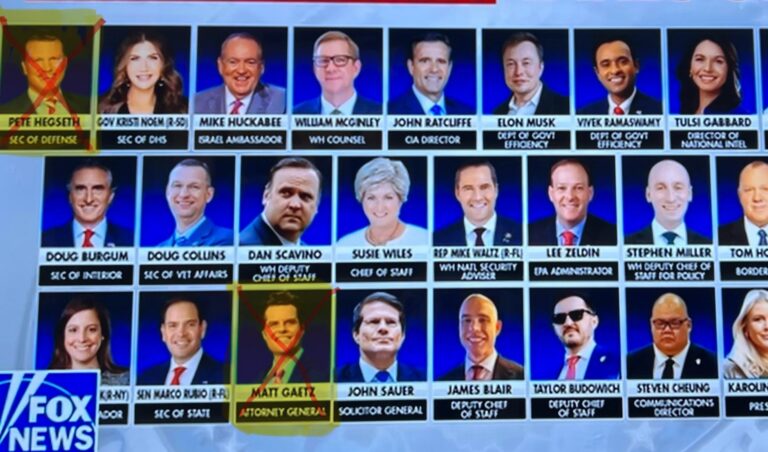
The role of the U.S. Secretary of Defense has always been crucial to national security, serving as the head of the Department of Defense (DoD) and overseeing military strategy, policy, and operations. The recent nomination of Pete Hegseth, a former Army officer, author, and media figure, has sparked considerable discussion about what his leadership could mean for the future of the DoD and U.S. defense policy. Hegseth brings a distinct background with his extensive experience as a combat veteran and outspoken commentator on military and national security issues.
Let’s explore the potential future of the Department of Defense if Hegseth assumes this pivotal role, examining the areas of military modernization, international alliances, defense spending, and the evolving challenges in cyberspace and artificial intelligence.
Military Modernization and Strategic Reorientation
One of the key areas where Hegseth could make a significant impact is in military modernization. With the increasing complexity of global threats, from great-power competitors like China and Russia to non-state actors and rogue nations, Hegseth’s potential focus might be on reshaping military priorities. He is likely to emphasize readiness, effectiveness, and innovation, pushing for advancements in technology and weapons systems while ensuring the U.S. military maintains its edge in traditional domains like land, sea, and air.
Under Hegseth’s leadership, the DoD could:
Invest in Next-Gen Defense Technology: Hegseth may prioritize advanced weapons and defense systems, including hypersonic missiles, autonomous systems, and next-gen aircraft, to prepare for the conflicts of tomorrow.
Focus on Readiness and Resilience: Drawing on his combat experience, Hegseth could emphasize soldier training, preparedness, and mental health, aiming to enhance resilience and morale within the armed forces.
Shift Toward Asia-Pacific: With China as a primary competitor, Hegseth might reorient defense strategy to emphasize the Indo-Pacific, bolstering regional partnerships and positioning forces to counter Chinese influence.
Strengthening International Alliances and Partnerships
Hegseth’s public positions suggest he might adopt a somewhat more assertive approach to foreign policy and alliances. He has been vocal about the importance of strong, mutually beneficial alliances, especially in regions where U.S. influence is challenged. With NATO allies and strategic partners in the Indo-Pacific, Hegseth could push for more collaborative defense strategies that enhance the United States’ position globally while reducing dependency on American resources alone.
Possible shifts under Hegseth could include:
Revitalizing NATO Relations: Hegseth may advocate for greater burden-sharing among NATO allies, pushing for increased defense contributions from European partners to ensure collective security.
Strengthening the Quad Alliance: As tensions rise with China, Hegseth could support closer ties with India, Japan, and Australia, focusing on joint military exercises, intelligence sharing, and economic sanctions on shared adversaries.
Encouraging Regional Defense Agreements: Beyond traditional alliances, Hegseth might advocate for more agile, regional defense agreements, tailored to specific threats in the Middle East, Africa, and the Arctic.
Prioritizing Cybersecurity and Artificial Intelligence
In an age of digital warfare and artificial intelligence, the future of defense increasingly depends on innovations beyond traditional military capabilities. Hegseth’s focus on modernization may extend to strengthening the U.S. in these emerging areas, given the growing threats from state and non-state actors capable of cyber attacks and the rapid pace of AI-driven military tech in rival nations.
Hegseth’s leadership might prioritize:
Investment in Cybersecurity Infrastructure: Hegseth could allocate more resources toward cyber defense, aiming to protect critical infrastructure and government agencies from increasing cyber threats.
AI and Data-Driven Warfare: As AI becomes essential in military strategy, Hegseth might accelerate DoD initiatives to develop AI-driven surveillance, reconnaissance, and autonomous weapons systems, ensuring ethical standards while keeping the U.S. competitive.
Strengthening Public-Private Partnerships: Recognizing the private sector’s role in cyber innovation, Hegseth may champion collaboration between the DoD and tech companies to secure sensitive data, manage threats, and stay on the cutting edge of technological advances.
Balancing Defense Spending and Fiscal Responsibility
Another area where Hegseth’s perspective could differ is in defense spending. Given his background as a conservative commentator, he may push for a more efficient use of the defense budget, reduction in bloated pay for military leaders with less than successful track records, emphasizing cost-effective measures while preserving the operational effectiveness of the armed forces. This focus on fiscal discipline could manifest in the form of streamlined procurement processes, cutting outdated programs, and prioritizing high-impact investments.
Under Hegseth’s guidance, defense spending might involve:
Modernizing While Reducing Waste: Hegseth could advocate for a more agile budgeting approach, channeling funds into critical areas while minimizing expenditure on legacy systems and bloated bureaucratic costs.
Encouraging Military-Industry Accountability: With an eye on efficiency, Hegseth might hold defense contractors to higher standards, pushing for cost-effective solutions that still meet the DoD’s rigorous demands.
Fostering Transparency and Oversight: Hegseth could promote transparent budgeting, encouraging public and congressional oversight to ensure taxpayer dollars are allocated to areas with tangible defense benefits.
Addressing Evolving Challenges in Domestic Defense Policy
The Secretary of Defense also plays a crucial role in bridging military policy with domestic issues, especially with the rise of domestic extremism and ideological divides. Given Hegseth’s public commentary on American values and patriotism, he may bring a more defined vision to the DoD’s approach to internal threats, military recruitment, and civil-military relations.
In this regard, Hegseth might focus on various key elements:
Strengthening Military-Civilian Relations: Hegseth may seek to bridge the gap between military and civilian communities, promoting a culture of service and understanding while advocating for veterans’ issues.
Addressing Recruitment and Retention Challenges: Hegseth might place emphasis on making the military an attractive career path by focusing on benefits, career advancement, and support for military families.
Combatting Ideological Extremism: In tackling domestic security threats, Hegseth could support initiatives to address extremism without overreaching, balancing security with civil liberties to maintain public trust.
Future Outlook
The future of the Secretary of Defense under Pete Hegseth, if confirmed, could signify a shift in U.S. defense policy toward a more assertive and strategic approach, focused on readiness, modernization, and strengthening alliances. His background as a veteran and public figure known for his strong opinions could bring a bold perspective to the role, with potential reforms in budgeting, cybersecurity, and a sharpened focus on China and Russia.
While Hegseth’s approach may be polarizing, his leadership could bring needed attention to pressing issues, from modernizing the military to addressing the complex web of global threats facing the U.S. today. Only time will tell how Hegseth’s nomination, if confirmed, will shape the future of the Department of Defense, but one thing is certain: his tenure would mark a distinctive chapter in American defense strategy, with implications that could resonate both domestically and globally.
With all this said, is he a pay-to-play nominee backed by the conservative Koch Brothers Group?




